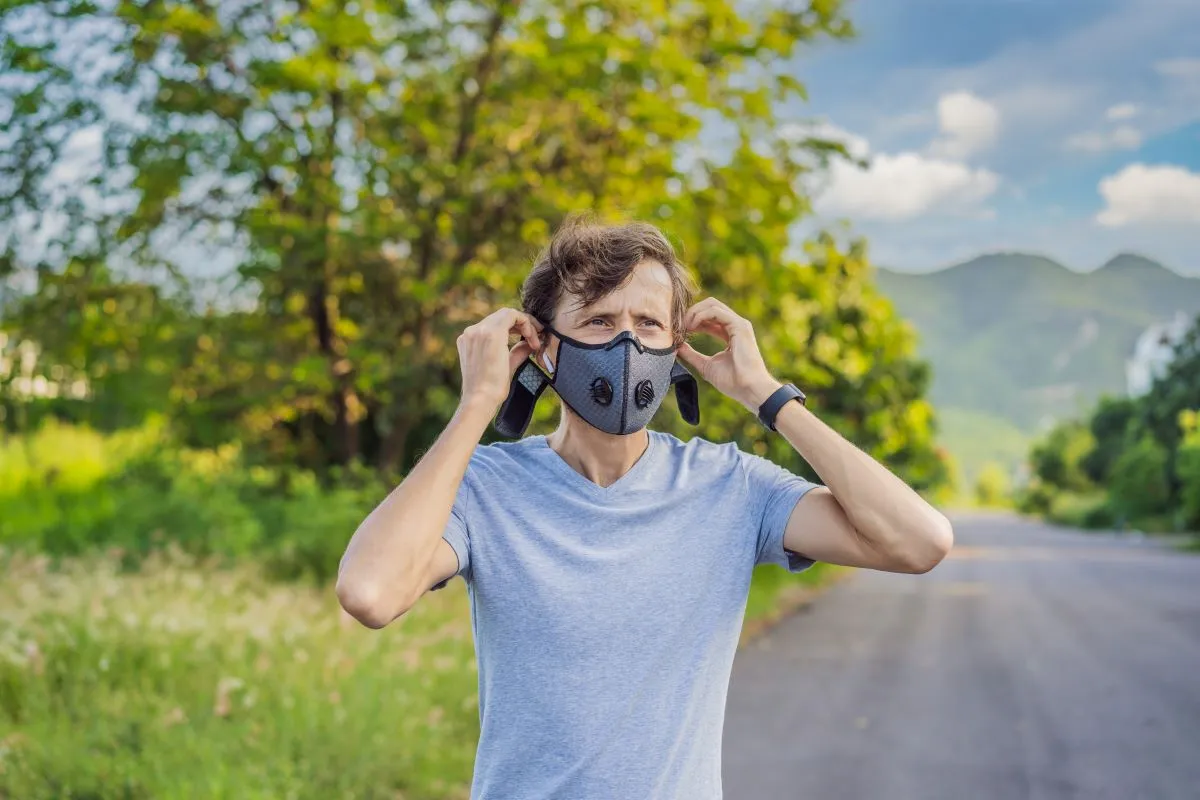
The negative impact of air pollution on respiratory and cardiac health is scientifically proven and well-documented. Research shows that ozone (O3), particulate matter, carbon monoxide (CO), and other air pollutants increase the gravity of lung and heart diseases. People living in areas with unhealthy air are susceptible to these problems. The most vulnerable segments of society are children, the elderly, and people suffering from chronic diseases.
Air Pollution Health Risks
Most natural and human-made factors contribute to an increase in air pollution. Emissions from vehicles, power-generating plants, and fumes from chemical plants account for a major part of the pollution generated by humans. Nature also plays its part in increasing air pollution through wildfires, gasses from volcanic eruptions, and decomposing organic matter. These natural and artificial sources enhance the amount of harmful chemicals and gases in the air.
Air pollution impacts the entire population but some people are more susceptible than others due to their weaker immunity and direct exposure to pollution. These include children, the elderly, pregnant women, patients already suffering from lung and heart conditions, people of low socioeconomic backgrounds, and those who live near power plants and industrial areas.
Air Pollution Long-term and Short-term Effects
Air pollution impacts the health and well-being of a person on a daily or seasonal basis. A person may face high pollution levels on a given day or part of a day, such as during rush hour for vehicles, for any reason.
On the other hand, health impacts of pollution may be long-term, such as the rise of pollution in a particular season. An example of this rise is an increase in particulate matter during winter due to the burning of wood stoves and an increase in ozone levels during summer.
The duration and concentration of air pollutants can affect the public health of the local population. The most vulnerable segment includes people with weak health status. Short and long-term effects of air pollution are most severe on these individuals.
Air Pollution in the U.S.
Like in many other developed countries, air pollution in the United States comes from various sources, particularly transportation and industrial activities. The Environmental Protection Agency (EPA) monitors and gives suggestions to reduce key pollutants, such as CO (carbon monoxide), sulfur dioxide (SO2), particulate matter (PM2.5), etc. These efforts have reduced the concentration of pollutants in the USA considerably in the last few decades. However, the situation is still critical in some areas where the level of air quality is less than the standards set by the federal government.
Wildlife Smoke
Changing weather due to climate change is also increasing the risks of air pollution. Wildfires are now more common than decades ago particularly due to global warming. These wildfires are causing hazards in many parts of the world, including parts of the USA, particularly the West. These wildfires deteriorate air quality in far-flung areas as they continue for days or sometimes weeks due to long spells of hot weather. Smoke from these wildfires may result in causing limited issues such as respiratory tract infection, eye irritation, etc. to severe respiratory and cardiac problems, including lung function problems and heart failure.
Gaps in Air Quality
Over 60 years have passed since the enforcement of the Clean Air Act, the primary and most comprehensive federal air quality law. However, there are still several gaps in the air quality monitoring and enforcement in the country. People living in minority and low-income communities particularly suffer from this dangerous air due to their proximity to industrial areas, lack of greenery, inaccessibility to quality healthcare facilities, and congested populations. There is also insufficient pollution data available for these populations, leaving them unaware of the health risks they face due to uncontrolled pollution.
Public Health and Air Pollution
There are several health risks associated with air pollution for the general public. These include:
Respiratory Diseases
Low air quality increases risks for bronchitis, asthma, and lung cancer with continuous exposure to several pollutants. These public health issues are directly related to air quality.
Cardiovascular Problems
The primary air pollutant related to heart problems is particulate matter (PM 2.5). Its excessive amount in the air causes hypertension, strokes, and other health issues.
Mental Health Issues
The air quality index impacts the mental health of individuals and increases the cases of depression, anxiety, etc. Urban areas with high rates of air pollution particularly suffer from these problems related to mental health.
Cognition
Another negative impact of air pollution is related to the neurological health of the affected. It declines cognitive functions and may contribute to the beginning or worsening of Alzheimer’s disease.
Air Quality Index – Selected Cities
Los Angeles
The largest city in California was once notorious for its smog due to natural and man-made pollutants. However, the city has improved a lot in reducing air pollution. However, there are still several neighborhoods that experience higher levels of pollution due to traffic load and higher industrial activities. In these communities, authorities have reported a rise in the rates of asthma and other respiratory diseases, particularly in children and older adults.
Fresno
This is another city in California, located in the middle of its Central Valley. It faces severe air pollution in both urban and rural areas due to the effects of urbanization and pollution-producing agricultural methods. These natural and man-made pollution sources have contributed to the higher concentration of particulate matter. This is causing health issues in its population, which consists mainly of Latino.
Chicago
This city in Illinois is one of the largest cities in the U.S. and is known for higher concentrations of air pollution due to a history of industrial production. The pollution particularly affects the poor neighborhoods with less coverage for healthcare facilities.
Steps to Control Air Pollution
The situation of air quality in the U.S. is alarming when compared to many countries in Western Europe and some other developed countries. It happens despite the presence of environmental laws and efforts to enforce the policies on federal and state levels. However, other steps are also necessary to significantly reduce the level of pollution and improve the health of the general population.
Multi-faceted Approach
Following a single method and leaving others is not the wise approach to counter the issue of air pollution. It needs a sophisticated approach that combines various aspects in a single policy to prevent the rate of pollution and reduce it considerably. Therefore, a viable policy must include improvement in the policy, engaging local communities, and investing in clean technologies. For this purpose, the focus should be on introducing laws that reduce emissions from vehicles and industries, environmental health monitoring for communities at risk, and informing populations on a massive level that encourages them to join the initiative.
Grassroot Level Contribution
Forming organizations on the grassroots level can make the efforts of reducing pollution fruitful due to their approach and scope. These organizations can target vulnerable communities across the country and prepare them to monitor the rise in the pollution level in their areas, report the rising levels to authorities, and check those activities that harm the environment and cause an increase in air pollution. These activities can be generated by industries and vehicles. These organizations can force these polluters to become accountable in front of the law more than federal and state-level authorities.
Prospects of Air Pollution in the USA
The environment has changed on a global level due to numerous factors. Climate change has steadily increased the temperatures of the earth, which has worsened air quality due to the formation of ground-level ozone. This pollutant causes smog that ultimately adds air pollution and worsens air quality. To overcome this problem, some innovative steps are mandatory, such as increasing green spaces for urban planning, investing in renewable energy solutions, and improving the quality and quantity of public transportation.
Conclusion
Air quality affects the environment and deteriorates public health on a wider scale, particularly for children, older adults, and those with chronic conditions. It is possible to protect these vulnerable groups and the future of all Americans by understanding air pollution gaps and fixing them by adopting and implementing innovative policies. Visit BenefitsbyState.com for more insights.
FAQs
Breathing in a polluted area causes many health issues due to exposure to air pollutants. They may cause several lung, heart, and mental issues. Both long and short-term exposure to poor air quality deteriorates health.
The USA is not an ideal country for air quality. There are certain areas where air quality is far below acceptable levels due to higher industrial activities, wildfires, and other natural and man-made pollution.
According to estimates, over 60,000 Americans die annually due to various respiratory and cardiac problems caused by air pollution.

